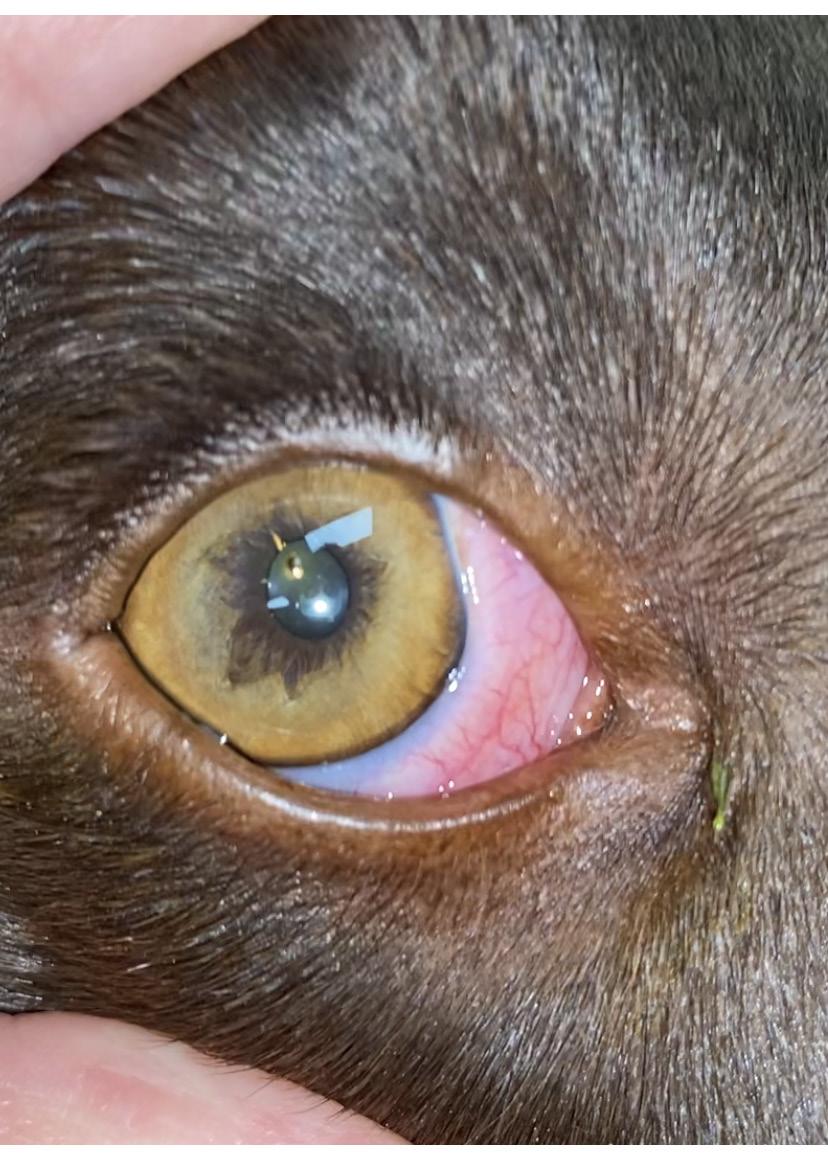
4 minute read
Common Ocular Issues With Hunting Dogs
WRITTEN BY HANNAH VISSER, Medical Director for Charleston Animal Eye Specialists
It’s no secret by the English setter in our practice logo that I have a love for gun dogs. With hunting seasons approaching, it’s important to know how to care for your hunting companion’s eyes. Hunting dogs are frequently in an environment rich with opportunities for ocular injuries. The most common ocular injuries are associated with foreign debris such as plant material obtained while running through brush, grass or marshlands. Although it’s not possible to completely prevent these injuries, early detection and appropriate treatment are key.
Early detection begins with the essential “tailgate check” after each day out in the field. This involves checking the dog’s entire body for injuries, often with them standing on a truck’s tailgate. Most veterinarians have adopted a “snout to tail” approach in their physical examinations which means they examine each part of a dog’s body starting with the nose working back to the tail. This system prevents us from missing portions of an exam and can be adopted by any owner doing an exam on their own dog. A “tailgate check” should be performed immediately following a hunt in a well-lit area or with the use of a light source such as a flashlight. You should train your dog to allow you to examine their eyes by opening their eyelids as well as rolling the eyelids outwards to view the pink tissue surrounding the eye called conjunctiva. The outside of the eye itself should be white and the dog should not be squinting or holding the eyes shut. If any of these abnormalities are noted, the dog should be examined by a veterinarian as soon as possible.
Every gun dog owner should carry a first aid kit for both themselves and their canine companion on hunting trips. There are free resources such as www.gundogdoc.com which outline all the essential materials in a complete canine first aid kit. Every kit should include a bottle of saline eye rinse. These bottles can be purchased over the counter at any pharmacy or grocery store and can be used to rinse the surface of the eye as well as the conjunctival pockets. Conjunctiva lines the surface of the eyelids and forms pockets under the eyelids which collect plant material, seeds and pollen. These retained foreign materials can be irritating and cause corneal ulcerations or inflammation called conjunctivitis. Corneal ulcerations are wounds on the surface of the eye which are painful and can be threatening to vision as well as to the eye itself if not identified and treated quickly. After a day of hunting, be sure to thoroughly rinse your dog’s eyes as well as conjunctival pockets with saline to eliminate these potential irritants.

Many dog owners take the prevention of ocular injuries a step further by using protective glasses. There are several excellent options for ocular protection on the market that can be considered. One such option includes a brand called Rexspecs which come in a variety of colors, designs, and sizes; they even sell replacement lenses for the inevitable scratches. With patience and time, many dogs can adjust to wearing these and they can prevent serious injuries from branches, grasses, and more. Often these dogs will even associate the eyewear with their upcoming adventure and become excited to put them on and get to work!
Watching a trained dog flush, retrieve or point brings joy to many gun dog owners and often strengthens the bond we have with these animals. Make a “tailgate check” and saline rinse part of your post-hunt routine just as you do taking celebratory photos and loading the truck. Careful examination and rapid identification of ocular irritations or injuries can often ensure these dogs have comfortable visual eyes for seasons to come. ■




